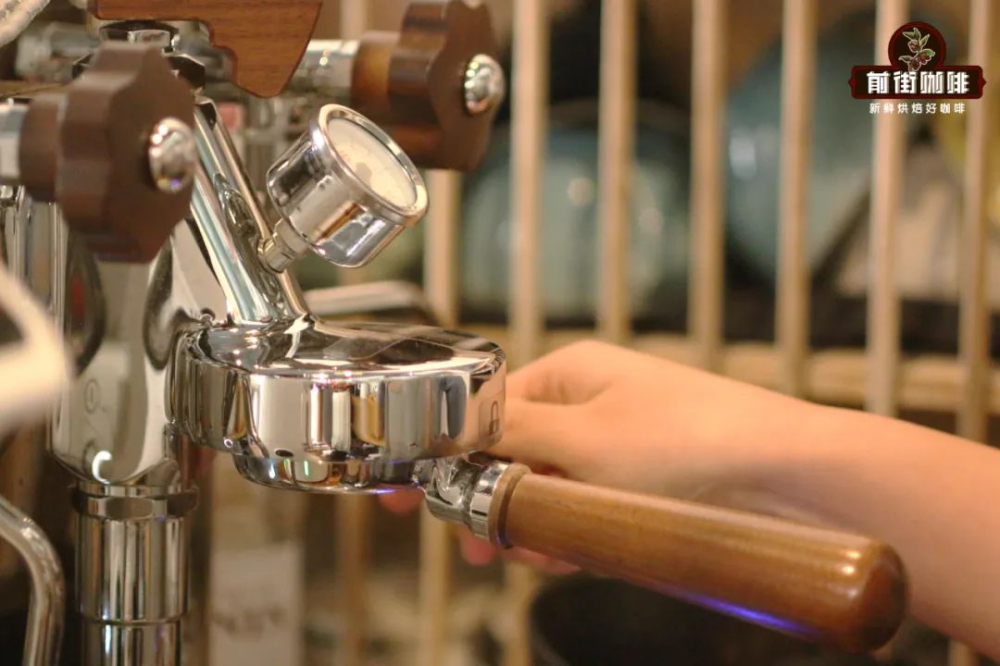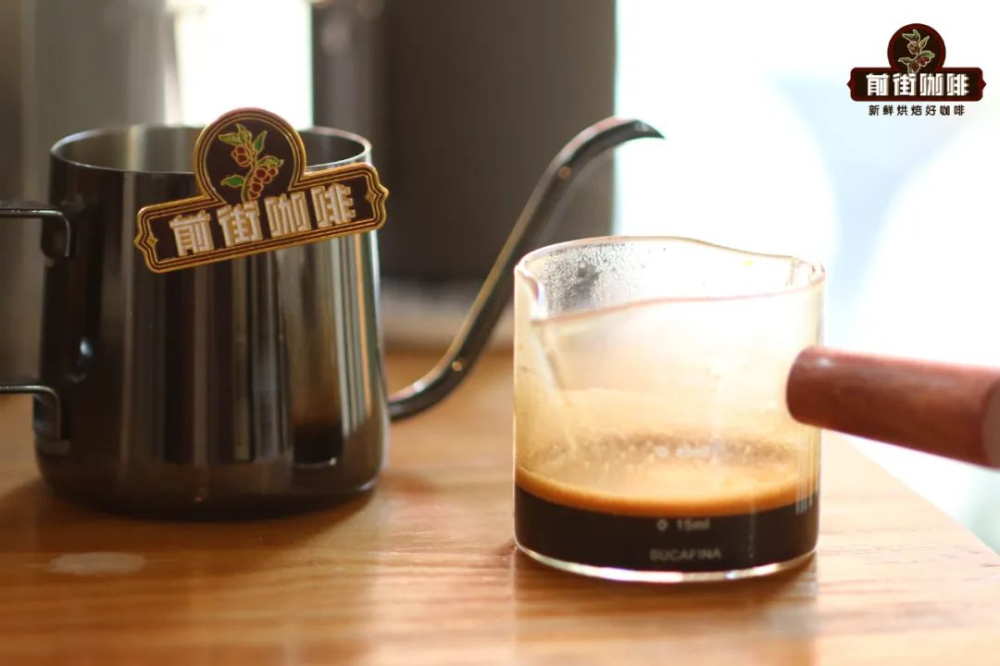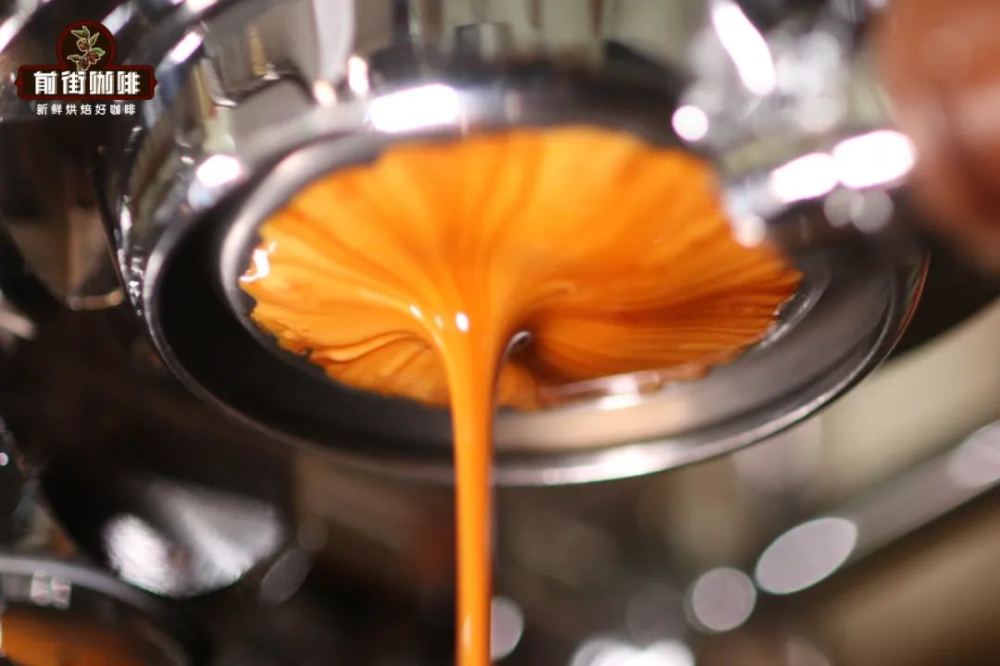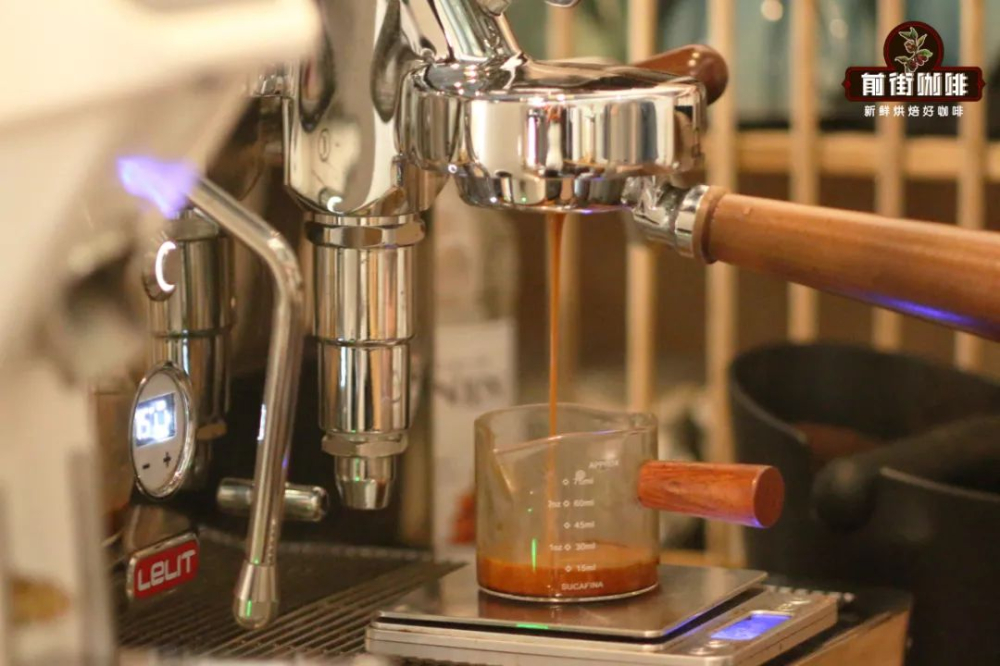What is the right extraction time for espresso machine? Requirements for standard espresso
In brewing coffee any coffee, there is one parameter that cannot be avoided, and that is the extraction time. Espresso is more time-sensitive than other ways of making it.

This is because the extraction time of espresso is relatively short, and the gap varies greatly from second to second. Therefore, the extraction time is a very important parameter for espresso.
Generally speaking, we think that when other parameters are constant, the shorter the extraction time is, the less coffee substances are dissolved, and the longer the extraction time is, the more coffee substances are dissolved. If you have known the golden cup theory, you should know that the coffee substance is not dissolved as much as possible, but there is a moderate range. In some very old espresso textbooks, one espresso is extracted with 7-9 g of powder to extract about 1 ounce of espresso, while the double concentrate is extracted with 16-18 g of powder using a shunt handle to extract 2 cups of 1-ounce espresso. No matter it is single or double, the extraction time is within 20-30s.

Of course, few people should copy this extraction formula completely now, because times have changed. One of the most obvious features is that the quality of coffee beans has been improved, the degree of roasting is not as deep as before, and the coffee has become "resistant". Copying the previous formula is not good.

The current espresso extraction standard has more stringent requirements than before: 1) a double powder bowl is used as the extraction unit of espresso; 2) the espresso liquid is calculated by weight rather than by volume; 3) the ratio of coffee powder to coffee liquid tends to be 1: 2) the extraction time is more inclined to 25-30 seconds. Therefore, under the current extraction parameters, the fastest way to debug espresso is to fix the ratio of powder to liquid at 1:2 and to control the extraction time at 25-30 seconds by adjusting the degree of grinding and the amount of powder. Through the data of extraction time, we can also know the general trend of the flavor of espresso. For example, espresso may tend to be thin, light and sour for less than 25 seconds. If the time is more than 30 seconds, it may tend to be bitter and exciting. Time is also an indicator of the stability of your recommended extraction scheme. For example, we are debugging an espresso parameter that we think has a good flavor, and then we will use this parameter to extract 2-3 cups continuously. If the time error is within 1 second, then this parameter is considered stable. If the time error is more than 1 second, then you need to adjust the parameters again.

Some friends may also ask: "does qualified espresso time have to be within 25-30 seconds?" Not necessarily, as suggested by Qianjie, the time for hand-brewing coffee is 2 minutes, which does not mean that 2 minutes and 30 seconds of coffee is not qualified. More depends on the whole extraction parameters, for example, the increase in the amount of powder will lead to a relative extension of the extraction time; the pre-immersion extraction time will also be included in the extraction time, so the use of pre-immersion extraction time will be extended accordingly.
Important Notice :
前街咖啡 FrontStreet Coffee has moved to new addredd:
FrontStreet Coffee Address: 315,Donghua East Road,GuangZhou
Tel:020 38364473
- Prev

Characteristics of advantages and disadvantages of hand-brewed coffee by central water injection Analysis of segmented Circle injection of hand-made Coffee
Qianjie mentioned in the article "the Science of Water injection" that circular water injection has obvious advantages over central water injection, and the central water injection method is not as powerful as stability and uniform extraction alone. This time we will switch to the perspective of central water injection. If there is really no merit in this method, then
- Next

What are the precautions for making coffee? What are the five major factors that affect the flavor of hand-brewed coffee?
As the saying goes, "you can't call yourself an old driver without flipping a car." If you touch, crawl and roll on the road of making coffee, you will inevitably encounter all kinds of "rollover sites". Don't be afraid when something goes wrong, the most important thing is to find a way to deal with it. And in some cases, it can save that cup of coffee. Do you have to pour out the wrong scale when grinding beans? As soon as you
Related
- Beginners will see the "Coffee pull flower" guide!
- What is the difference between ice blog purified milk and ordinary milk coffee?
- Why is the Philippines the largest producer of crops in Liberia?
- For coffee extraction, should the fine powder be retained?
- How does extracted espresso fill pressed powder? How much strength does it take to press the powder?
- How to make jasmine cold extract coffee? Is the jasmine + latte good?
- Will this little toy really make the coffee taste better? How does Lily Drip affect coffee extraction?
- Will the action of slapping the filter cup also affect coffee extraction?
- What's the difference between powder-to-water ratio and powder-to-liquid ratio?
- What is the Ethiopian local species? What does it have to do with Heirloom native species?

